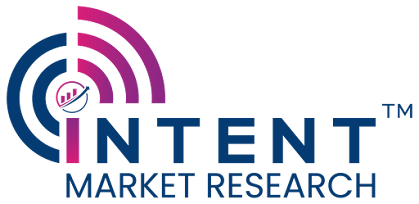The global AI in real estate market is poised for explosive growth. With an anticipated surge from USD 2.2 billion in 2023 to USD 18.4 billion by 2030 at an impressive compound annual growth rate (CAGR) of 34.3%, artificial intelligence (AI) is undeniably shaping the real estate industry. Let’s dive into how AI is making waves and transforming real estate like never before.
The Role of AI in the Real Estate Sector
AI is no longer just a buzzword—it’s an integral part of industries worldwide. Real estate, historically reliant on manual processes and in-person interactions, is now undergoing a digital revolution powered by AI. From automating mundane tasks to providing data-driven insights, AI is helping real estate professionals stay ahead in an increasingly competitive market.
Download Sample Report @ https://intentmarketresearch.com/request-sample/ai-in-real-estate-market-3003.html
How AI is Transforming Real Estate
1. Advanced Property Valuation: AI leverages big data and predictive analytics to provide accurate property valuations in real-time. By analyzing historical data, market trends, and local metrics, it offers a more precise and reliable valuation process than traditional methods.
2. Smart Property Search: AI-powered search engines make property hunting seamless for buyers and renters. Tools like chatbots and recommendation algorithms analyze preferences and suggest properties tailored to individual needs, saving time and effort.
3. Predicting Market Trends: AI systems process vast amounts of data to forecast market conditions. Whether it’s housing prices, demand trends, or interest rate fluctuations, AI predictions empower investors and realtors to make smarter decisions.
AI Tools Revolutionizing Real Estate Operations
1. Virtual Assistants and Chatbots: AI chatbots handle customer inquiries 24/7, answering questions, scheduling property viewings, and even helping with paperwork. This enables agents to focus on more strategic tasks.
2. Machine Learning for Risk Assessment: Lenders and property investors use AI-driven machine learning models to assess risks, including default probabilities and market volatility, ensuring informed decision-making.
3. Digital Twins and Virtual Reality (VR): With AI, creating “digital twins” of properties is possible. This technology allows buyers to take virtual tours of properties, providing an immersive experience without stepping foot inside.
The Impact on Stakeholders
- For Buyers and Renters: AI has simplified the entire process, from property search to document verification. Personalized property suggestions and virtual viewings add unparalleled convenience to home-hunting.
- For Agents and Brokers: AI tools streamline administrative tasks, leaving agents with more time to focus on client relationships and deal closures.
- For Property Managers: AI-enabled predictive maintenance models can analyze data from IoT devices to foresee maintenance needs and reduce costs significantly.
Key Advantages of AI in Real Estate
- Time Efficiency: Automation reduces the time spent on manual tasks.
- Cost Savings: Minimizing human error leads to lower operational costs.
- Increased Transparency: Real-time analytics and data-driven insights build trust among buyers, sellers, and investors.
- Enhanced Customer Experience: Personalized interactions and tailored property options create lasting impressions.
Access Full Report @ https://intentmarketresearch.com/latest-reports/ai-in-real-estate-market-3003.html
AI Challenges in the Real Estate Market
No technology is without its hurdles. For AI in real estate, challenges include:
- Data Privacy Concerns: Handling sensitive customer information raises privacy and security issues.
- High Implementation Costs: Investing in AI infrastructure can be prohibitively expensive for smaller firms.
- Adoption Barriers: Resistance to change and lack of AI expertise can slow down adoption.
Why the Real Estate Market Is Betting Big on AI
As the market grows, so does the potential for AI to solve age-old problems like inefficient processes and inconsistent data analysis. Firms embracing AI now are likely to lead the way as this trend reshapes the industry landscape.
FAQs
1. How is AI used in property valuation?
AI analyzes historical sales data, neighborhood metrics, and current trends to provide highly accurate property valuations.
2. Can AI predict real estate market trends?
Yes, AI uses big data and machine learning algorithms to forecast price changes, demand shifts, and other market trends.
3. Are chatbots effective in real estate?
Absolutely! Chatbots offer 24/7 assistance, handling client queries and booking viewings efficiently.
4. Is AI adoption expensive for real estate firms?
While initial costs can be high, the long-term benefits like automation and cost savings often outweigh these expenses.
5. What is the future of AI in real estate?
AI’s role in real estate will only expand, influencing everything from investment strategies to personalized buying experiences.
About Us
Intent Market Research (IMR) is dedicated to delivering distinctive market insights, focusing on the sustainable and inclusive growth of our clients. We provide in-depth market research reports and consulting services, empowering businesses to make informed, data-driven decisions.
Our market intelligence reports are grounded in factual and relevant insights across various industries, including chemicals & materials, healthcare, food & beverage, automotive & transportation, energy & power, packaging, industrial equipment, building & construction, aerospace & defense, and semiconductor & electronics, among others.
We adopt a highly collaborative approach, partnering closely with clients to drive transformative changes that benefit all stakeholders. With a strong commitment to innovation, we aim to help businesses expand, build sustainable advantages, and create meaningful, positive impacts.
Contact Us
sales@intentmarketresearch.com
US: +1 463-583-2713











